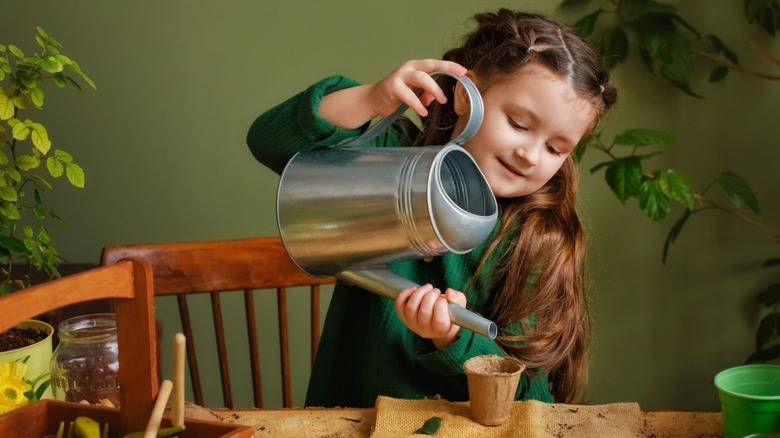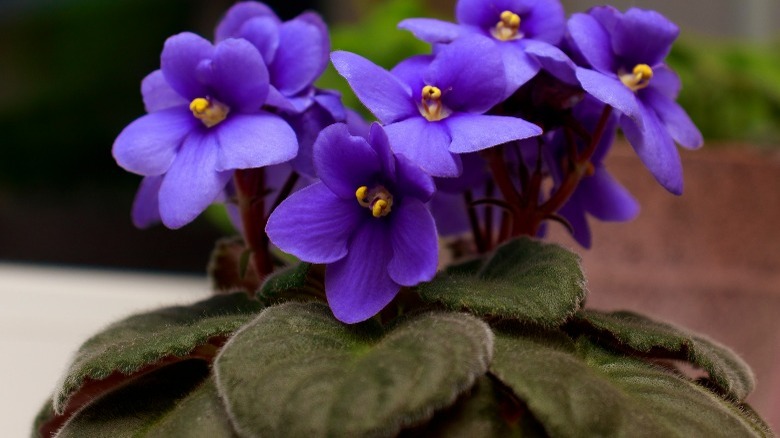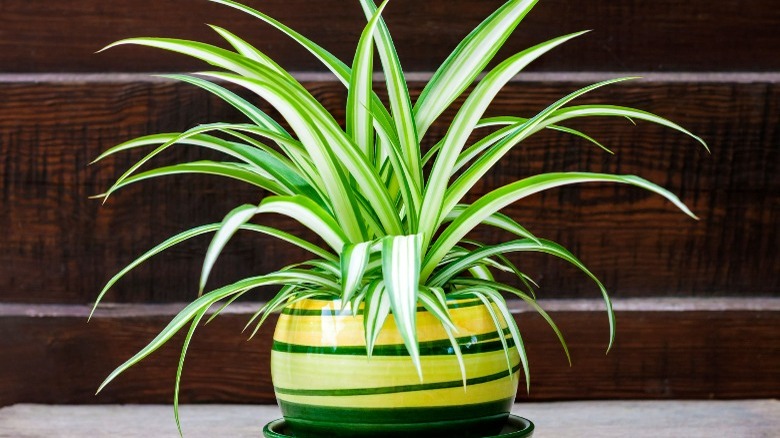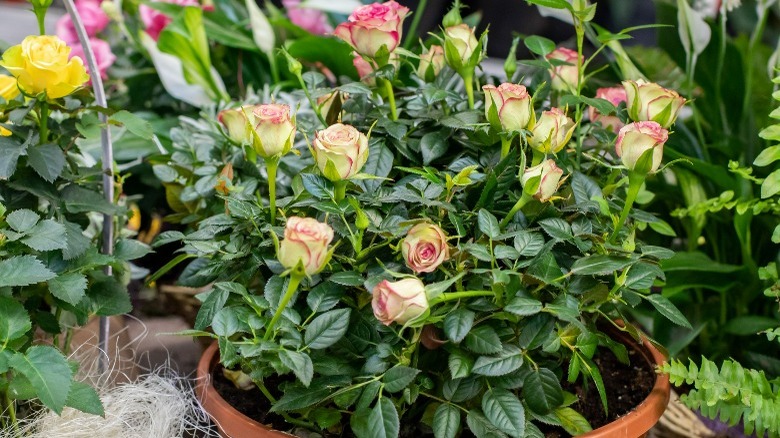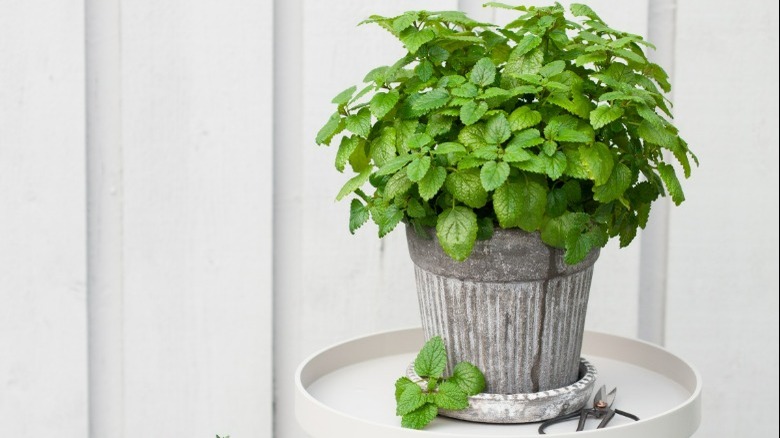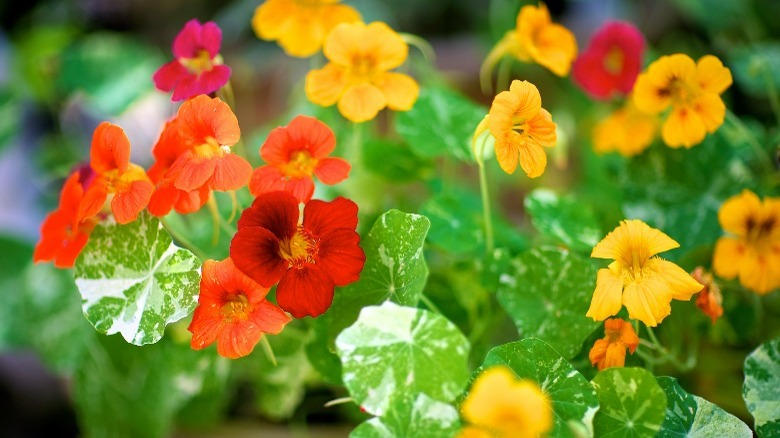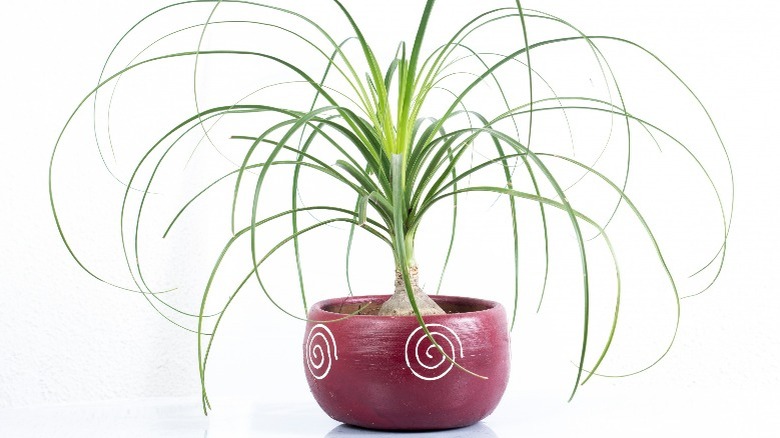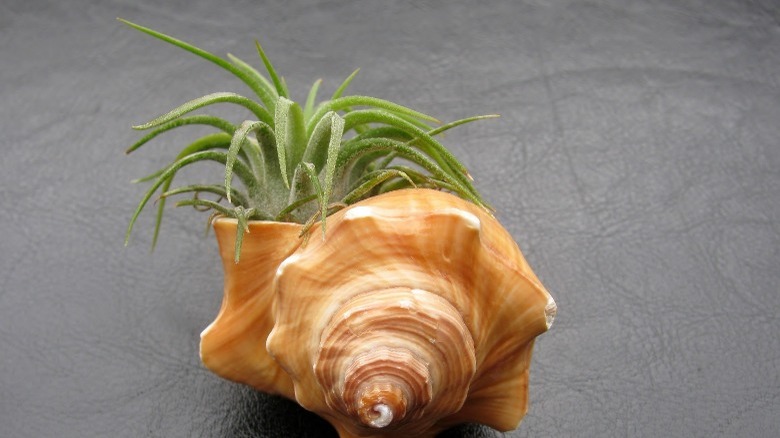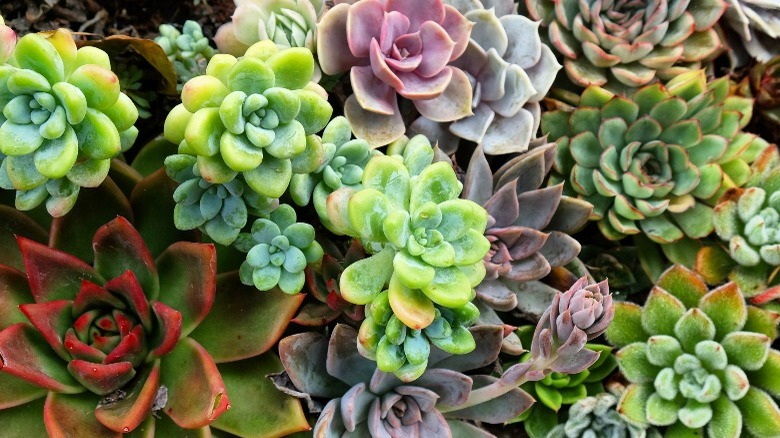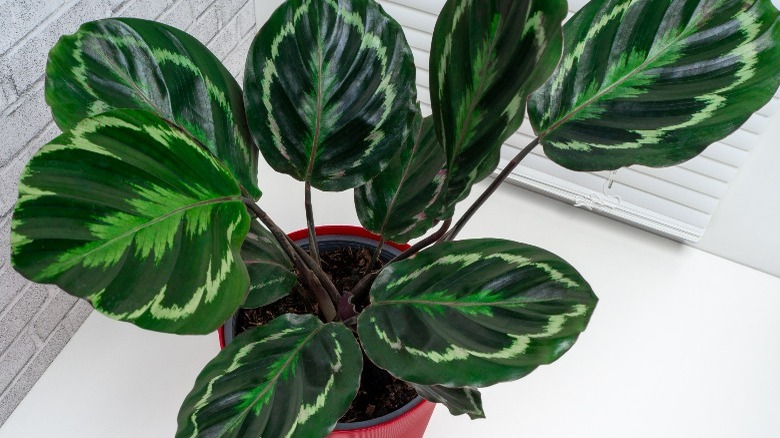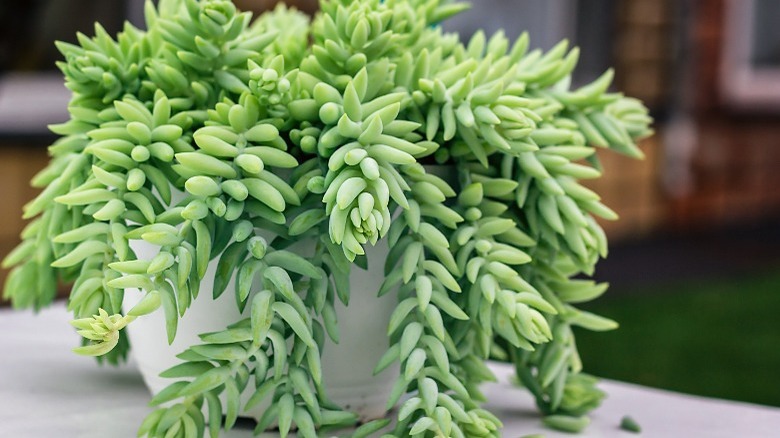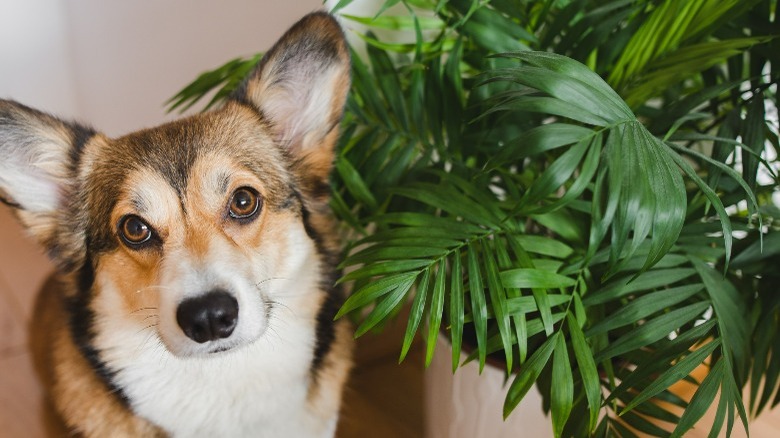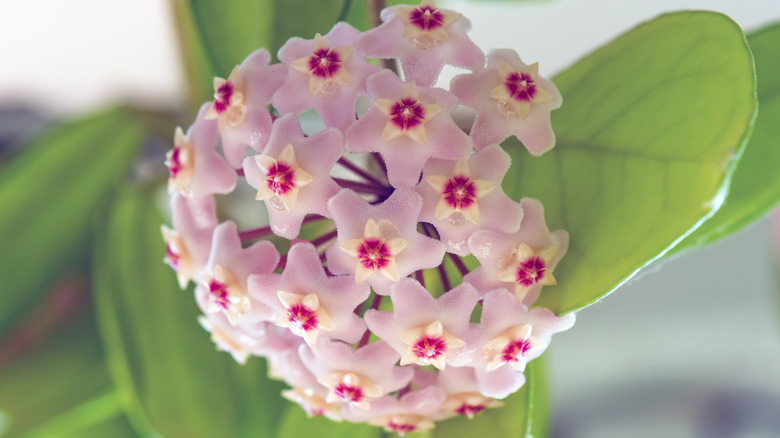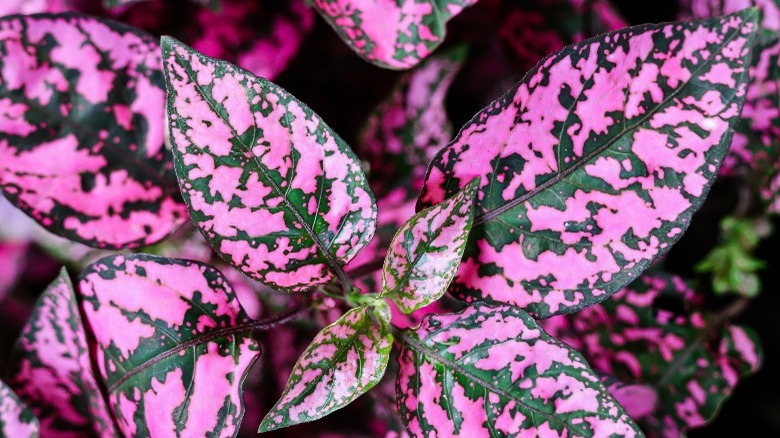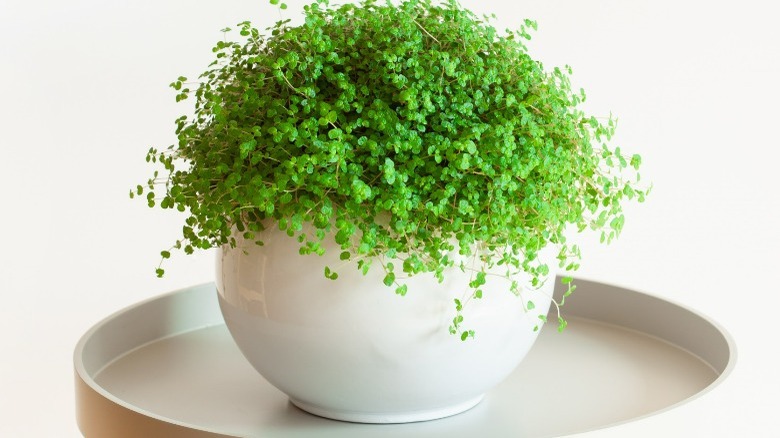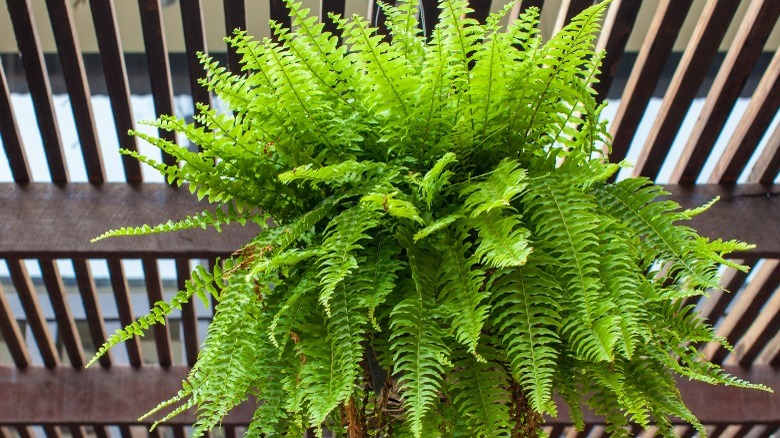15 Pretty Houseplants Safe For Your Child's Bedroom
There are so many great reasons to add plants to your home and your children's bedrooms! Plants have amazing health benefits, from improving the air quality to helping us feel relaxed, according to WebMD. Getting kids involved with plants, from planting outdoor gardens to choosing plants for their own rooms, is an excellent way to develop their interests and do a fun family activity.
As with everything related to children, you want to make sure that you choose plants that are not toxic or prickly. This is also important if you have pets who might try to nibble on a leaf or flower. Many non-toxic plants have pretty flowers or colorful leaves, and some even have fun names to tickle a child's sense of humor. Purchase plants from a knowledgeable nursery to make sure that they are identified correctly. Many varieties of plants look similar but are not all safe for children. When it comes to plants and children, what's non-toxic and safe for one, doesn't mean your own child won't have a reaction, per the University of California, so keep an eye out if you see a sudden skin irritation or if you think your child has eaten that missing cluster of flowers.
1. African Violet
Do you have childhood memories of growing African violets (Saintpaulia ionantha)? These easy-to-grow plants have been popular since the late 1800s. They have soft, velvety leaves and colorful flowers that bloom in shades of purple, pink, fuchsia, white, and blue. With the proper care, they can bloom year-round, per Clemson's Home & Garden Information Center.
Sunlight Needs: A lot of indirect light
Water Needs: Set the container in a dish of room temperature water when it's time for a drink. Only water enough to keep the soil moist. Avoid wetting the leaves.
2. Spider plant
Spider plants (Chlorophytum comosum) may be the only spider that doesn't make you shudder! This hardy, non-toxic plant is perfect for growing in your child's room and may appeal to the Spider-Man fans in your house. The long dangling baby shoots that give the plant its name have tiny clusters of white flowers, according to Clemson. It's the perfect plant to hang from a basket.
Sunlight Needs: Bright to moderate indirect light.
Water Needs: No fluoridated water. Use distilled water or rainwater. Allow the top inch of soil to dry out briefly between watering.
3. Miniature Roses
Combine the tiny rosebud appearance with sweet names like "Cinderella" and the "Fairy rose," and you may find your child completely enchanted by miniature roses (Rosa chinensis "Minima"). These miniature versions of regular-sized rose plants can be grown in containers. Check for fragrant varieties and those that are thornless to find the perfect addition to your child's room.
Sunlight Needs: Direct sunlight for at least four hours daily. Place near a window and rotate weekly, so all the leaves benefit from the sun, per Minnetonka Orchards.
Water Needs: Evenly moist soil with good drainage.
4. Lemon Balm
Mmm...the citrusy scent of the lemon balm (Melissa officinalis) leaves not only add fragrance to your child's room, but the leaves can be picked and added to food, or flower arrangements, per Harvest to Table. It's in the same broader plant family as mint, and the leaves look very similar. This plant is perfect for containers because if it's left on its own in an outdoor garden, it can crowd out other plants.
Sunlight Needs: Best in full sun.
Water Needs: Regular watering to keep the soil moist.
5. Nasturtium
Nasturtium (Tropaeolum majus) are cheerful-looking plants with blooms in various shades of red, orange, and yellow and can be vibrant or pastel. The leaves resemble the shape of a lily pad and have veins that radiate out from the center. The flowers and the leaves of Nasturtium are edible and add a peppery taste to salads, per Wisconsin Horticulture.
Sunlight Needs: Bright light but not heat.
Water Needs: Water once or twice a week when the top 1 inch of soil begins to dry. Provide enough water to moisten the soil to a 6-inch depth.
6. Ponytail palm
The ponytail palm (Beaucarnea recurvata) is named because its short trunk resembles the base of a palm tree, but it's not actually in the palm family! In fact, the ponytail palm is a succulent in the Agave family, per Wisconsin Horticulture. The leaves are long and thin and arch back from the center of the plant like strands of hair; only these won't need to be detangled. The plants will remain small when grown in a container.
Sunlight Needs: Full sun
Water Needs: Well-drained soil. Spray to create humidity.
7. Air plant
It can be an eye-opening experience for children to learn about air plants (Tillandsia), which grow without any soil. You may have seen them in hanging glass globes or tucked into seashells. There are many different colors and sizes, with some shaped like rosettes and others with strange alien shapes!
Sunlight Needs: Dappled shade. No direct sunlight.
Water Needs: Water once a week by submerging in water for about 30 to 60 minutes. Allow them to dry completely, per Iowa State.
8. Hens and Chicks
Sempervivum and Echeveria are two different succulents that share the common name Hens and Chicks because of the rosette-shaped baby plants which grow from shoots surrounding the mother plant, per Kellogg Garden. Echeveria has leaves with smooth edges, while Sempervivum has tiny teeth along the edges. Don't worry! They're not sharp. Both come in shades of red and green, while Echeveria also comes in shades of blue and grey. Grow them in a shallow, wide container, according to Drought Smart Plants.
Sunlight Needs: Full sun to partial shade.
Water Needs: Saturate soil and then let dry thoroughly.
9. Prayer plant
The prayer plant (Maranta leuconeura) takes its name from the movement of the leaves in response to the amount of light in their environment. During the day, the leaves may be lowered but rise to an upright position at night. Prayer plants can be grown in containers or hanging baskets. Their leaves have interesting leaf patterns in different colors, which will fade if they get too much sunlight, per Epic Gardening.
Sunlight Needs: Bright but indirect light.
Water Needs: Water when the top fourth of the soil is dry. Do not let the plant sit in water.
10. Donkey's tail
Donkey's tail (Sedum morganianum) is another succulent that stores water in its leaves, per Guide to Houseplants. The tapered, overlapping leaves hang down around the stem and look a bit like a donkey's tail. If your child is a fan of Eeyore from Winnie the Pooh, they may especially enjoy this plant. This plant will do well in a hanging container that keeps the delicate stems from being handled.
Sunlight Needs: Bright light but limited direct sun.
Water Needs: Soil should be kept slightly damp but not soaking. Less water is needed in winter and fall.
11. Parlor palm
One of the reasons parlor palms (Chamaedorea elegans) are such popular container plants is because their deep green foliage adds a tropical feel to any room, and they don't need to be right next to a window, according to NC State. In fact, you should protect them from cold drafts. It's a slow-growing, easy-to-care-for plant that can grow up to 4 feet tall, per the Missouri Botanical Garden.
Sunlight Needs: Bright, indirect light.
Water Needs: Let soil dry between watering.
12. Wax plant
Porcelain flower (Hoya carnosa) or wax plant can have pink or white star-shaped flowers. Some varieties do not flower at all, others take a few years to mature first, and some may be scented, according to A Natural Curiosity. You'd be right in thinking that the milky sap on the leaves means it's related to Milkweed. This can be a hanging plant or trained to grow on a trellis.
Sunlight Needs: Bright but indirect.
Water Needs: Allow the soil to dry out between watering. If the leaves at the base start to become soft, it's time to water.
13. Polka dot plant
The Polka dot plant (Hypoestes) is another one of those plants with a whimsical name. It has bright splotches of color on its leaves that can be a bright variegated pink, red, or white, according to Wisconsin Horticulture. This small plant can fit perfectly on a shelf or table in a child's room.
Sunlight Needs: Indirect light, partial shade
Water Needs: Keep soil moist, but don't let it sit in water. Sprinkle leaves with water from time to time.
14. Baby's tears
This sweet-looking plant is called Baby's Tears (Soleirolia soleirolii) because it has tiny rounded leaves. If it is allowed to grow, the tendrils will cascade down, which makes it suitable for hanging from a basket, per Plant Ontario. It grows fast, but you can trim it with scissors to control its shape. This plant can crowd out other plants, so it's best grown in a container by itself.
Sunlight Needs: Bright, indirect light.
Water Needs: Keep moist at all times.
15. Boston fern
A Boston fern (Nephrolepis exaltata 'Bostoniensis') is a very popular, easy-to-care-for houseplant with sword-shaped fronds arching from the center of the plant, according to Wisconsin Horticulture, making it another good plant for hanging up in a bedroom. Some varieties of these bright green ferns are more compact than others if you prefer the look of more upright growth.
Sunlight Needs: Medium to bright light. Not direct sunlight.
Water Needs: Keep the potting medium moist but not saturated.
